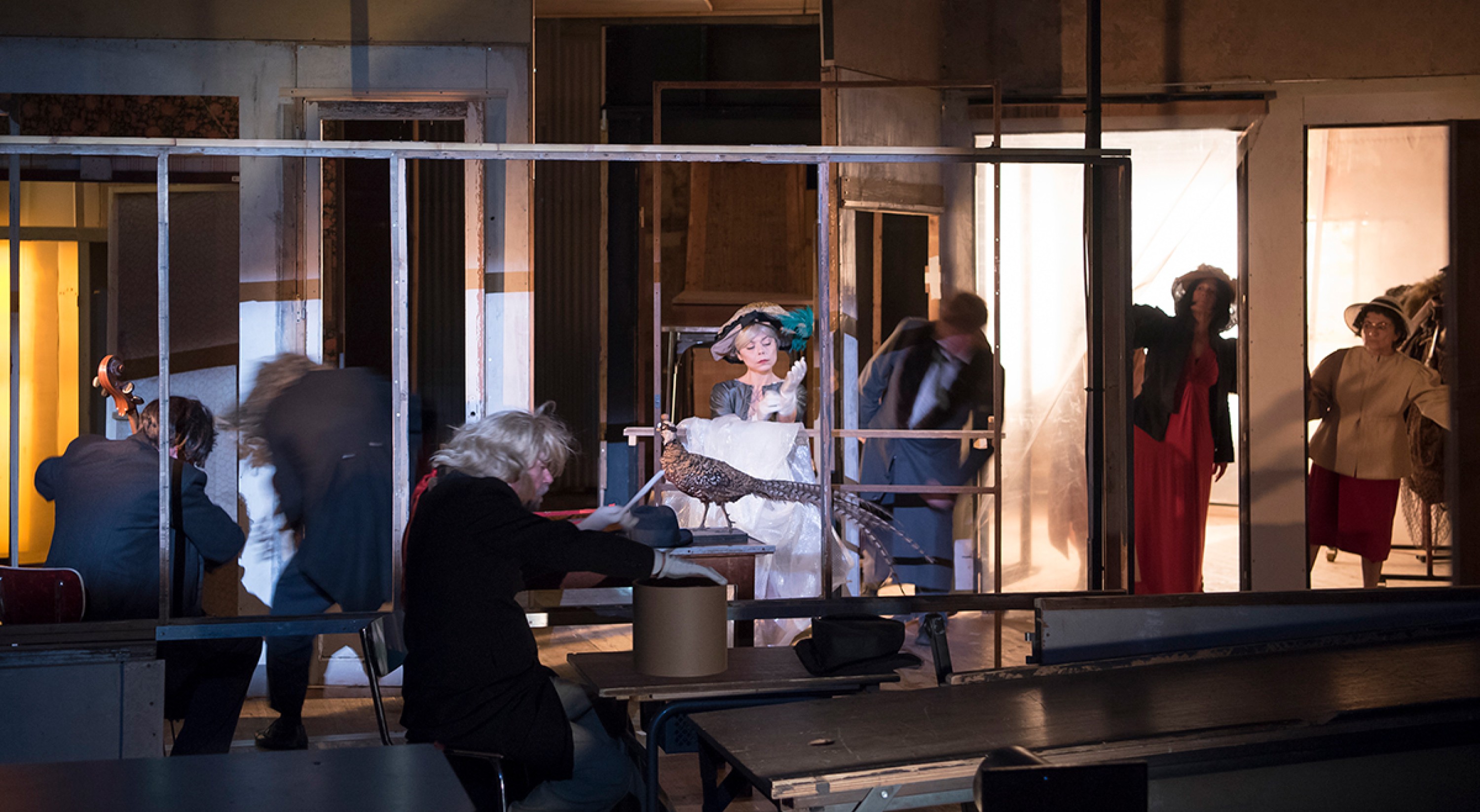Théâtre du Radeau François Tanguy
Soubresaut
septembersept 22 - october – oct 22
Directed and stage design by François Tanguy
Sound design, Éric Goudard - François Tanguy
With, Didier Bardoux, Anne Baudoux, Frode Bjørnstad, Muriel Hélary, Ida Hertu Vincent Joly, Karine Pierre, and Jean Rochereau
Stage management, François Fauvel
Lighting design, François Fauvel, and Julienne Havlicek Rochereau
Technical management, Éric Goudard
Construction, Pascal Bence, Frode Bjørnstad, François Fauvel, Éric Goudard, Julienne Havlicek Rochereau, Vincent Joly, Jimmy Péchard and François Tanguy
Administration, Nathalie Bernard, Leila Djedid, Annick Lefranc, Martine Minette and Nathalie Quentin
Co-produced by Théaâtre du Radeau (Le Mans) ; Théaâtre National de Bretagne – Centre Européen Théaâtral et Chorégraphique (Rennes) ; Théaâtre National de Strasbourg ; and Centre Dramatique National de Besançon Franche- Comté // In association with Nanterre-Amandiers, centre dramatique national ; and Festival d’Automne à Paris // First performed on 2nd November 2016 at Théâtre National de Bretagne – Centre Européen Théâtral et Chorégraphique (Rennes) // Théâtre du Radeau receives state aid from the Préfet de la région Pays de La Loire- Direction Régionale des Affaires Culturelles ; Le Conseil Régional des Pays de la Loire ; Le Conseil Départemental de la Sarthe and La Ville du Mans. It receives support from Le Mans Métropole.
With Soubresaut, François Tanguy gives us a new fresco in perpetual movement. Kafka, Labiche and Dante, Bach and Kagel will be rubbing shoulders there. In addition to a multitude of characters and situations, this continual reinvention of shapes is something we have come to expect from Théâtre du Radeau.
In 1982, François Tanguy, a distinctive figure in French theatre became the director of Théâtre du Radeau. He has been conjuring up theatrical magic with them ever since. After basing themselves on the classics, such as Molière, Shakespeare and Büchner, the company broke away from narrative and dramatic thread with its 1991 production of Chant du bouc. Since then, nine creations have brought Radeau and its audiences to an island of an extraordinary nature. It is a place where theatre is shaped in a way that we might sculpt matter of some kind. It is pulled apart into fragments and examined, in search of its form, quality of sound, or feel. It is then taken back to the workshop, where it is given a good polishing before being transformed into a gem and/or scaffolding. In Soubresaut, the stage becomes, once again, a crossroads in which moving bodies and mobile stage decors cross each other’s paths, in response to fragments of the history of theatre and the literary arts. The invitation extends to all genres: poetry, novels, diary notes, and essays. Among a whole host of others, you might hear the voices of Franz Kafka, Paul Celan, Ovid, Peter Weiss, or Eugène Labiche. Such outpourings are given free voice, and become part of the interplay between the permanent construction and deconstruction of stage and posture. Keeping the whole lot under control are the occasional nods in the direction of cinema, false playing of instruments and return journeys on makeshift slides.
